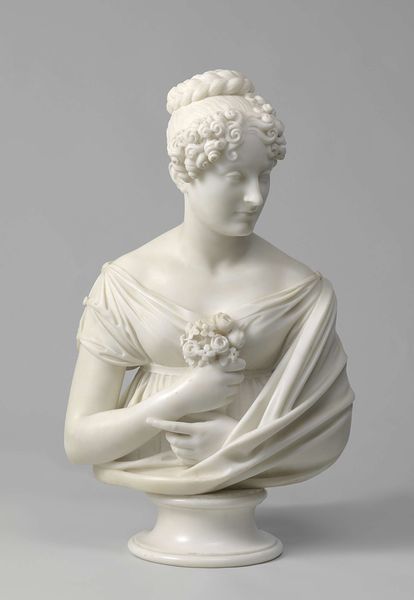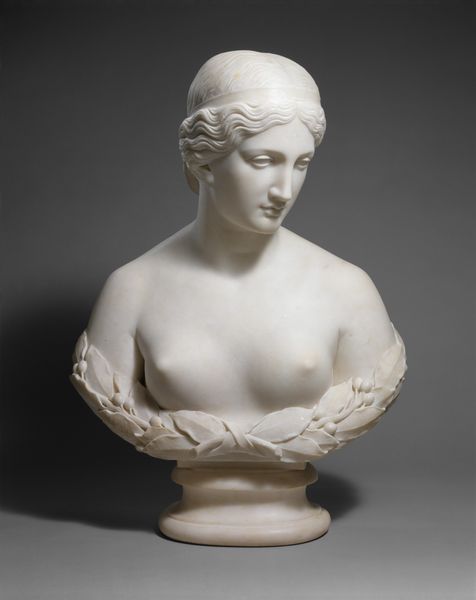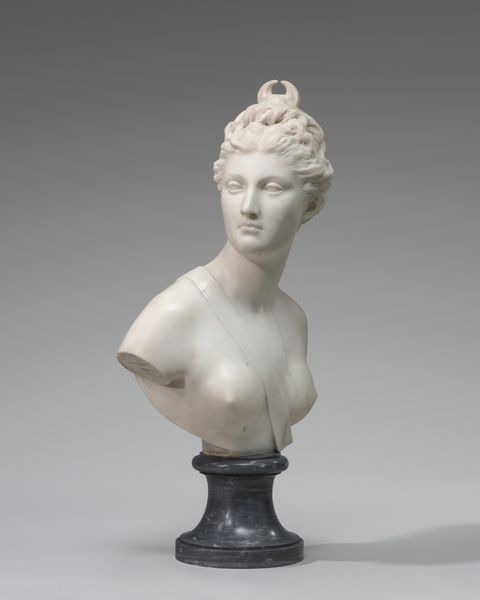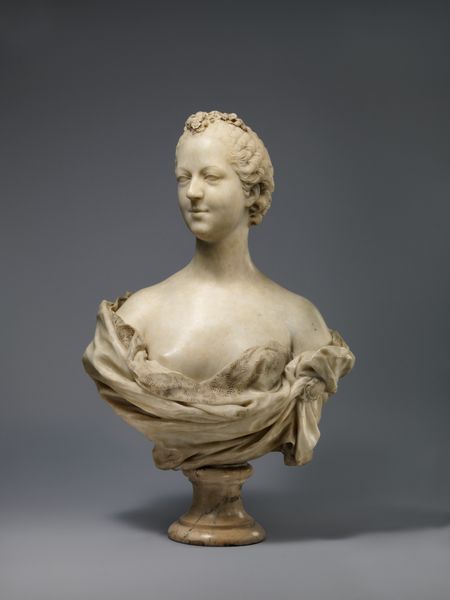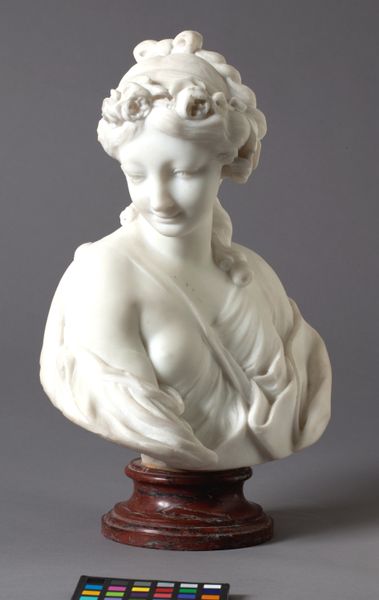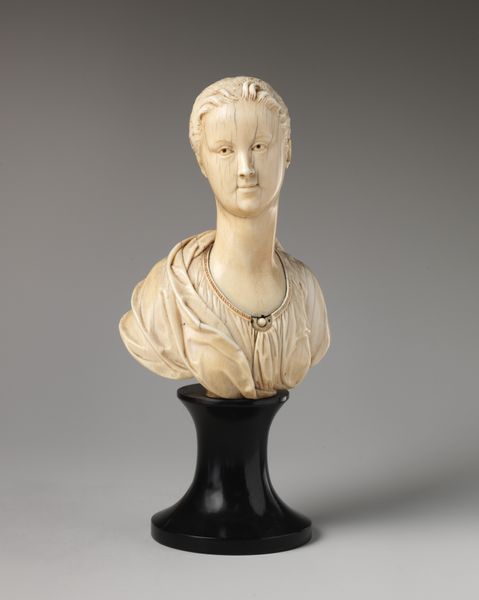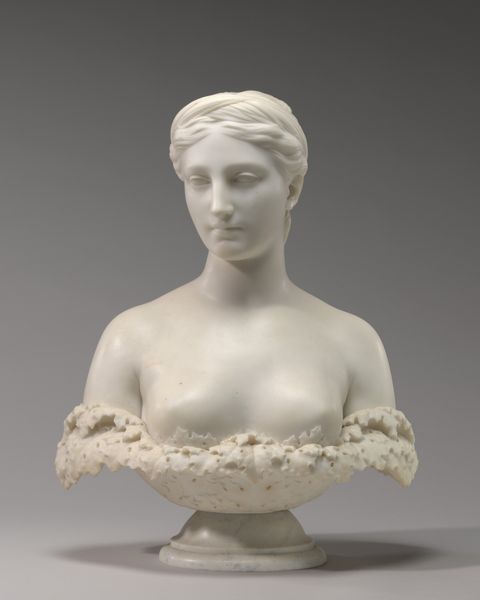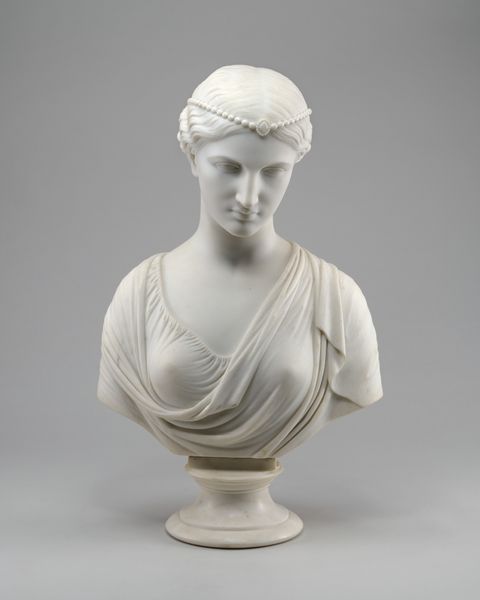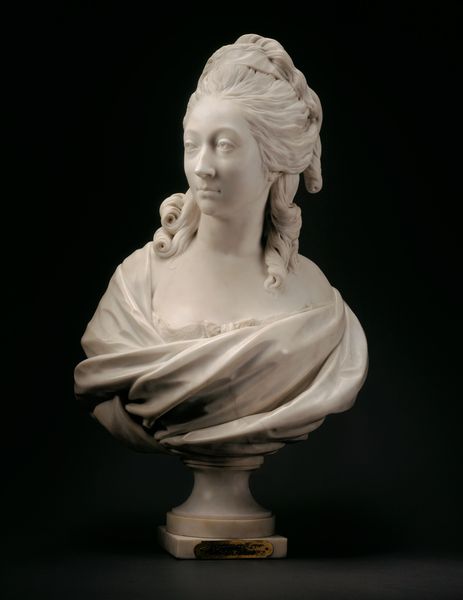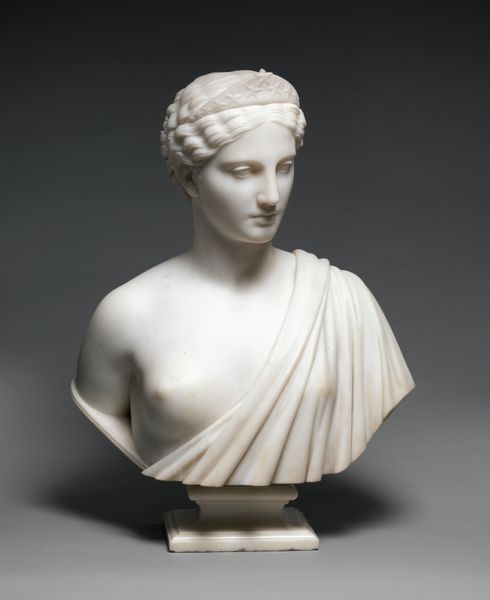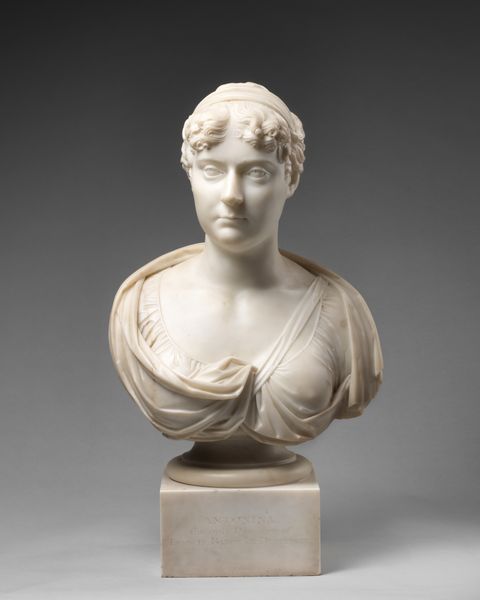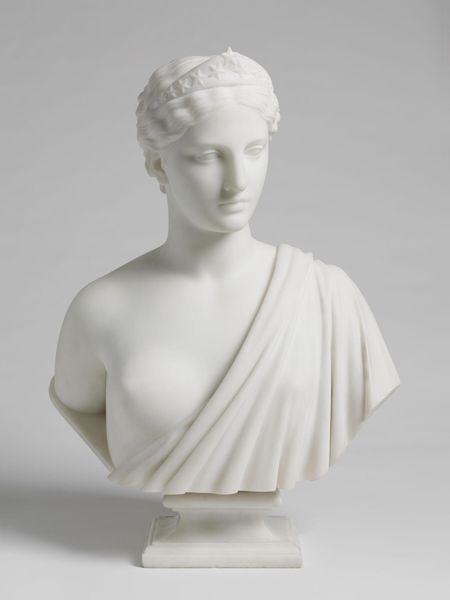
Dimensions: 27 x 15 1/4 x 11 1/8 in. (68.6 x 38.7 x 28.3 cm)
Copyright: Public Domain
Editor: This marble sculpture, “Venezia,” by Larkin Goldsmith Mead, dates from around 1865. The bust’s serene expression contrasts dramatically with the rough texture suggesting perhaps a seashell. What symbolism do you see at play in this contrast? Curator: The juxtaposition immediately evokes Venus, doesn't it? Born of the sea. But Mead gives us Venezia, not Venus. The power of Venice resided in its position as a gateway between East and West. She is both a classical allusion and a culturally specific reference to Venetian identity. Do you see anything in her gaze? Editor: There is a downward cast that is wistful, or perhaps melancholy, even? Not exactly the triumphant gaze I would associate with, say, an allegory of a city. Curator: Exactly. Consider Venice’s decline as a maritime power around this time. The seashell itself can be interpreted, beyond its connection to Venus, as a symbol of pilgrimage. Think of the scallop shell of St. James. Perhaps Venezia, enshrined in marble, becomes a site of pilgrimage. What emotions does that idea conjure? Editor: I feel a longing for a glorious past. Something beautiful that is slowly fading away, becoming more myth than reality. Curator: And so, we are left with this compelling portrait: a negotiation between classical ideals, the cultural weight of Venice, and a sense of elegiac remembrance, all meticulously rendered in marble. It's as much about memory as it is about form. Editor: I see her in a new light now, as a cultural emblem carrying multiple layers of historical significance. It’s remarkable how much can be read from one sculpted figure.
Comments
No comments
Be the first to comment and join the conversation on the ultimate creative platform.
